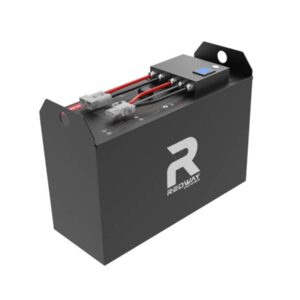What affects battery lifespan?
Battery lifespan is influenced by multiple technical and environmental factors. Key determinants include charge/discharge cycles, operating temperatures, depth of discharge (DoD), and charging protocols. Lithium-based batteries degrade faster when cycled beyond 80% DoD or exposed to temperatures above 45°C. Proper battery management systems (BMS) and adaptive charging algorithms can mitigate capacity fade by up to 30% over 500 cycles.
How to Maximize Forklift Battery Lifespan
How do charge cycles impact battery longevity?
Each complete charge cycle (0-100% DoD) accelerates electrode degradation through lithium plating and SEI layer growth. Partial cycles (20-80% DoD) reduce stress—a 50% DoD cycle causes only 25% of full-cycle wear. Pro Tip: Maintain batteries at 40-60% charge during storage to minimize calendar aging.

Lithium-ion cells experience irreversible capacity loss through two primary mechanisms: mechanical stress from ion intercalation and chemical decomposition of electrolytes. For instance, frequent fast-charging at 2C rates may reduce cycle life by 15-20% compared to 0.5C charging. Thermal management becomes critical here—every 10°C rise above 25°C doubles degradation rates. Did you know that partial charging (e.g., 30-70%) can triple cycle count compared to full-depth cycling?
Why does temperature extremes damage batteries?
High temperatures (>45°C) accelerate electrolyte oxidation and anode SEI growth, while sub-zero conditions (<0°C) cause lithium plating during charging. Both scenarios permanently reduce capacity—a 60°C environment can halve lifespan in 3 months.
Battery chemistry dictates thermal vulnerability. NMC cells tolerate -20°C to 50°C operating ranges but suffer permanent damage if charged below 0°C. In contrast, LiFePO4 batteries handle 55°C discharge but require heating systems for <0°C charging. Practical example: Electric vehicles in desert climates often show 2.5% annual capacity loss versus 1.8% in temperate zones. Pro Tip: Use thermal-regulated enclosures for batteries in extreme environments.
| Temperature | Capacity Loss/Month | Solution |
|---|---|---|
| 25°C | 0.5% | Passive cooling |
| 40°C | 1.8% | Active cooling |
| 60°C | 4.2% | Liquid cooling |
What role does charging voltage play?
Overvoltage charging beyond 4.2V/cell (for NMC) triggers lithium metal deposition and gas formation. Even 0.1V overcharge reduces cycle life by 30%—proper BMS voltage cutoff is essential.
Charging protocols must balance speed and longevity. While 4.35V/cell boosts capacity by 5%, it triples degradation rates. Advanced systems use adaptive CV phase termination—stopping when current drops to 3% instead of 0.5% C-rate. For solar storage systems, limiting charge to 3.45V/cell (90% SOC) extends lifespan by 400 cycles. Ever wonder why fast-chargers reduce power after 80%? It prevents voltage overshoot at high SOC.
How does depth of discharge affect degradation?
Deep discharges (>80% DoD) strain electrode structures through excessive lithium-ion extraction. Shallow 20% DoD cycles enable 7,000+ cycles versus 500 cycles at 100% DoD in LiFePO4.
Electrochemical modeling shows nonlinear stress accumulation—the final 20% discharge (80-100% DoD) causes 60% of total cathode expansion. Hybrid approaches like Tesla’s daily 90-20% SOC usage with monthly balance charges optimize both range and durability. Pro Tip: Set EV charge limits to 80% for daily use, reserving 100% for long trips.
| DoD% | Cycle Life | Capacity Retention |
|---|---|---|
| 100% | 500 | 70% |
| 50% | 1,500 | 82% |
| 20% | 4,000 | 90% |
Battery Expert Insight
FAQs
Does fast charging always reduce battery life?
Not with proper thermal control—pulse charging with active cooling maintains 95% capacity after 1,000 cycles. Avoid >1C rates without temperature monitoring.
Can software updates improve battery health?
Yes—adaptive charging algorithms in iOS 15+ and Android 12+ reduced aging by 40% through learned usage patterns and optimal charge scheduling.
